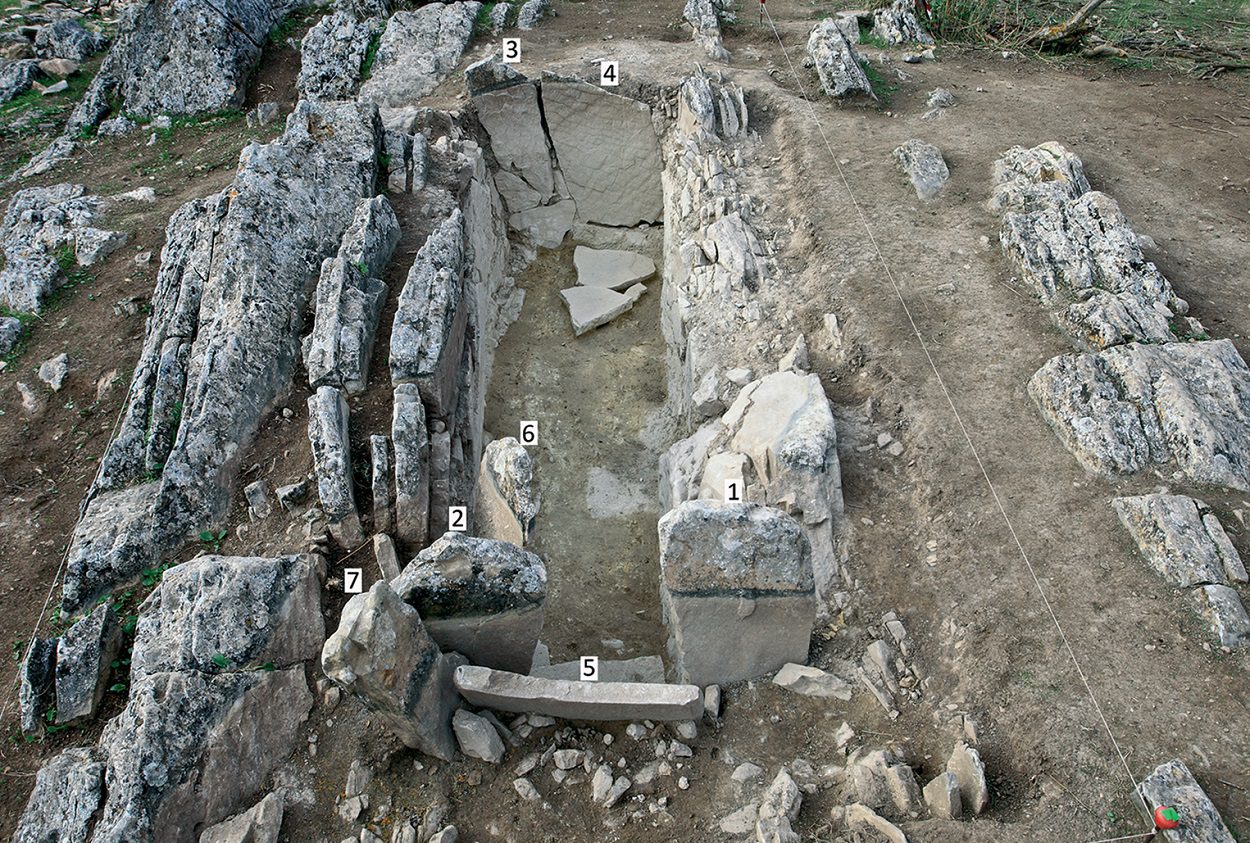A team of archaeologists have found a complex megalithic funerary monument at Piedras Blancas, located at the foot of La Peña de los Enamorados (“Lovers Rock”), a mountain near the city of Antequera in Andalusia, Spain.
The results of the excavation, published in the journal Antiquity, has revealed the monument to be part natural, part built, part hypogeum, and part megalith.
La Peña de los Enamorados is a limestone massif which towers at 880m above the Antequera plain. The area is recognised as a UNESCO World Heritage site due to the influence the mountain and the peaks of El Torcal played in the development of Late Neolithic and Copper Age sites, such as Menga, Viera and El Romeral from the 3rd and 4th millennia BC.
Excavations at Piedras Blancas revealed a tomb built on a small hill of calcarenite limestone, in which the structure is embedded in the geological substrate and matches the direction of the mountain’s north-east plane.

According to the researchers: “The tomb is part natural monument, part hypogeum, part megalith. It consists of a pseudo-rectangular cavity, 4.5m long and 1.45m wide, which was cut into the bedrock through the removal of the local calcarenite rock and then delimited, to the east and west, by a series of medium-sized slabs”.
The builders deliberately utilised the naturally folded geology, integrating the structure into the surrounding landscape. The naturally occurring calcarenite rocks are vertically oriented due to the anticline fold that forms the long sides of the structure towards the north and south.
Although there is no conclusive evidence indicating the existence of a roof, some significant broken slabs discovered in the upper portion of the tomb’s fill may be the remnants of capstones.
Two slabs delimiting the entrance and two at the back of the chamber are made of locally available stone and have been carefully selected and carved with decorated engraved motifs.
The builders also used slabs of marine sedimentary rocks that has natural ripples which is also found at the megalithic monument of El Romeral, suggesting that these structures were built according to a shared set of ideas.
Another remarkable architectural discovery consists of two triangular dressed stones fixed to the chamber’s floor with a mud mortar that are orientated with the summer solstice sunrise.
According to the study authors: “The fill of the tomb included a substantial assemblage of human bone, some faunal remains, knapped lithics and ceramics. A large number of stones (988kg), used to create specific features and spaces within the burial chamber, was also recorded. The stratigraphic evidence and carbon dating of the human remains suggests that the tomb was used over three major periods.”
The tomb has enabled the researchers to expand our understanding of the Antequera World Heritage site, the importance of La Peña de los Enamorados as a focus of Neolithic activity, and reveals further insights into the sophisticated arrangement through which the carving of rocks (either as stelae, as astronomical devices, or as canvasses decorated with natural motifs of marine origin) was coupled with the natural orientation of the geological substrate to ‘domesticate’ sunlight.
https://doi.org/10.15184/aqy.2023.35
Header Image Credit : M. Ángel Blanco de la Rubia





